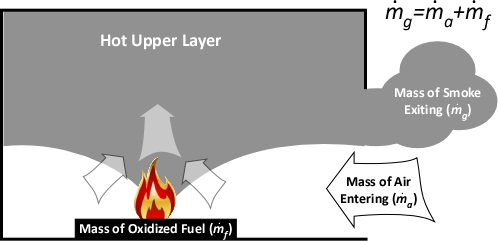FAQ-Fire Attack Questions: Part 4
This post will finish up with Captain Mike Sullivan’s Fire Attack Questions. In the coming weeks I will explore the research conducted by UL, NIST, and FDNY on Governors Island last summer (see the video of a presentation on this research at FDIC later in this post). If you have questions or topics that you would like to see addressed in the CFBT-US Blog, please comment on the post or send me an e-mail.
In your Blog about gas cooling you mention combustion products and pyrolysis products. Combustion products being light heat and smoke but can you elaborate on pyrolysis products, are they just the gasses that are off gassing from the fuel?
Smoke is a complex aerosol comprised of gases, vapors, and particulates resulting from pyrolysis and incomplete combustion along with entrained air. So, smoke is comprised of both chemical products of pyrolysis (thermal decomposition of fuel) and combustion products. The chemical composition of smoke is extremely complex and depends on both the type(s) of fuel and conditions under which it is burning, predominantly limitations on ventilation and oxygen concentration.
Smoke is toxic, with incomplete combustion of organic fuels producing substantial amounts of carbon monoxide and nitrogen containing materials producing hydrogen cyanide. As smoke is a product of pyrolysis and incomplete combustion, it also contains a substantial percentage of unburned fuel, as such, smoke is fuel.
I have read that if smoke is venting from a building then there will be air entering from somewhere. During basement fires where the fire is below the neutral pressure plane you will often see smoke exiting from the front door from top to bottom of the doorway with no apparent entry of air (no neutral pressure plane) and no other vent opening. Could you comment on this?
The mass of smoke exiting from the building must equal the mass of the oxidized fuel and the mass of air entering the building as mass can neither be created or destroyed (law of conservation of mass) as illustrated below.

If you see smoke exiting from an opening with a unidirectional air track (out), air is entering somewhere else. Likely, air is entering from multiple locations without presenting an obvious indicator as to the flow paths involved.
Controlling the flow path in this case, involves closing the door. This acts in the same manner as closing the damper in a wood stove. Restricting the exhaust will slow intake of air and reduce the heat release rate until water can be applied (preferably making access through an exterior doorway at the basement level or applying water through a window to further reduce heat release prior to an interior attack.
Recent research by Underwriters Laboratories (UL), National Institute of Standards and Technology (NIST), and the Fire Department of the City of New York on Governors Island showed that closing an open front door reduced the heat release rate from a basement fire. Battalion Chief George Healey, Dan Madryzkowski, Steve Kerber, and Lieutenant John Ceriello provided an excellent presentation on this research at the 2013 Fire Department Instructors Conference. I strongly recommend viewing the presentation (embedded below)!
Scientific Research for the Development of More Effective Tactics
The following video recording provides an excellent overview of research conducted by UL, NIST, and FDNY on Governors Island to develop an understanding of fire dynamics in the modern fire environment and the influence of firefighting tactics on firefighter safety and effective fire control and ventilation operations.
This presentation was a seminal event in the US Fire Service that emphasized the importance of understanding fire behavior and the connection between solid research (both in the lab and in the field) with operational strategies and tactics. The research is solid, but it is important that all of us understand that it does not answer all of the questions and we should consider context when attempting to apply specific findings in general terms. For example:
- The suppression elements of the Governors Island tests were conducted using solid stream nozzles as that is the predominant type of nozzle used by FDNY. Tests showed that positive impact can be had using this type of nozzle. An important finding, but it was not intended to address the question of where are solid streams more effective than fog patterns (and where fog patterns are more effective).
- Tests were conducted on the Vent, Enter, Isolate, and Search (VEIS) tactic. Evidence points to the importance of controlling the flow path by closing the door. This does not mean that this is or is not an appropriate tactic under all circumstances or in all contexts, it simply addresses the importance of controlling the flow path.
The fire service owes a tremendous debt to UL, NIST, and FDNY (and in particular George, Dan, Steve, and John) for their commitment to improving firefighter safety and the effectiveness of firefighting operations. In order to maximize the value of this critically important research, it is essential that we explore the findings and underlying data and make sense of how this information can improve firefighting operations in our communities. More on this in subsequent posts!
Ed Hartin
Tags: fire behavior, Fire Control, fire development, practical fire dynamics, situational awareness, Tactical Ventilation, vent controlled fire


